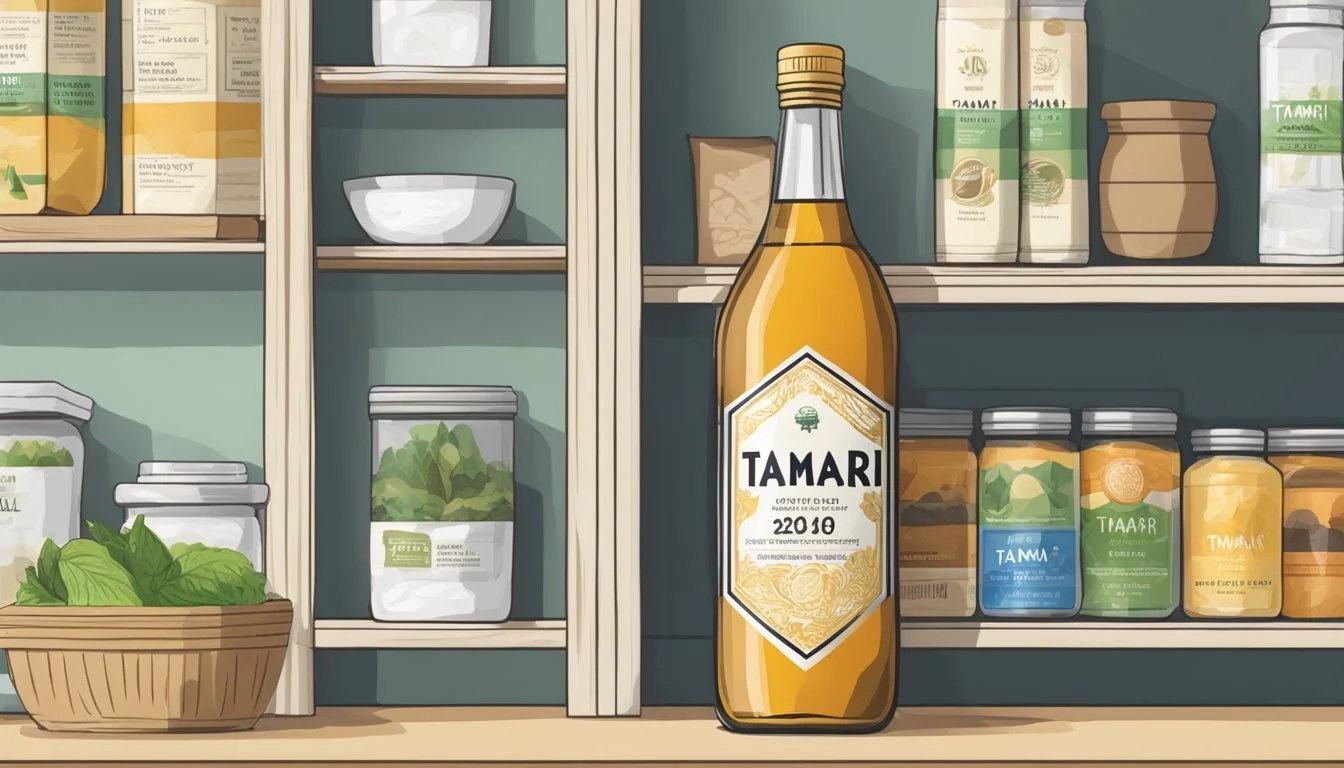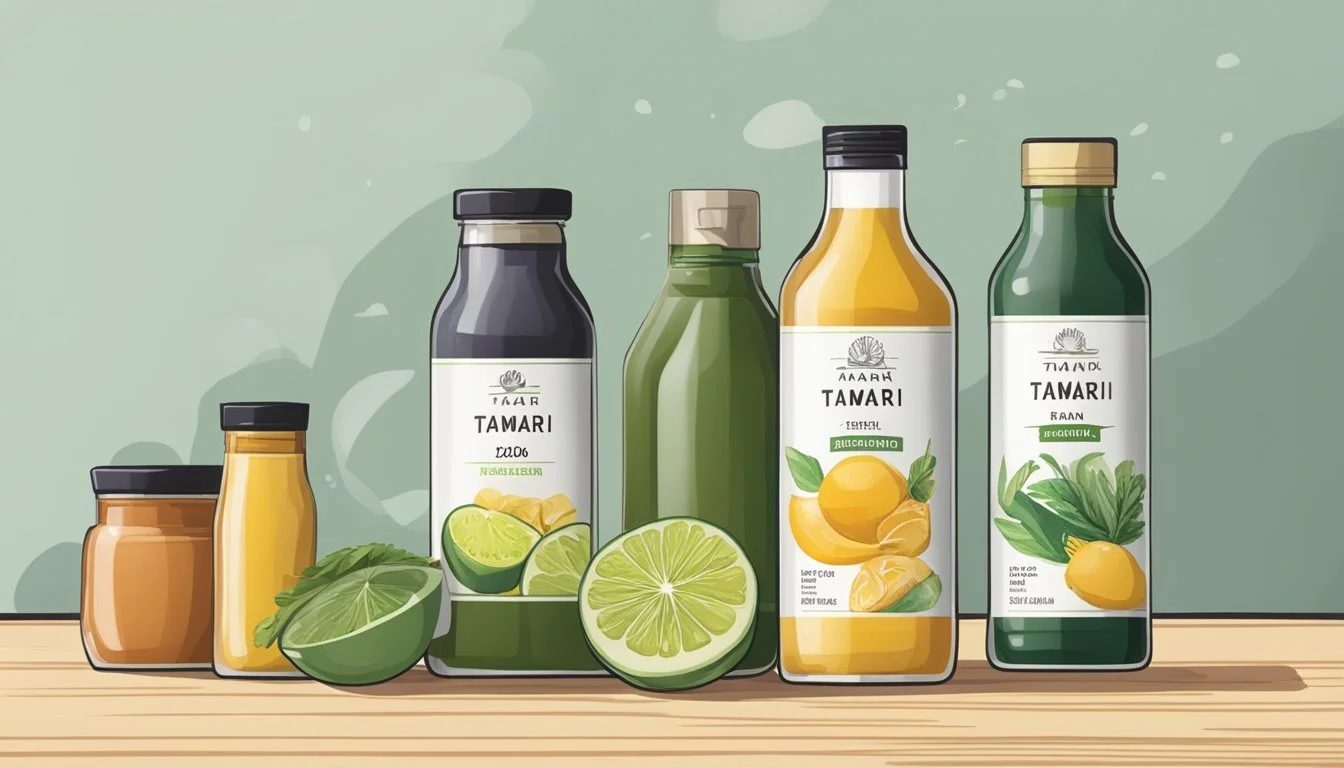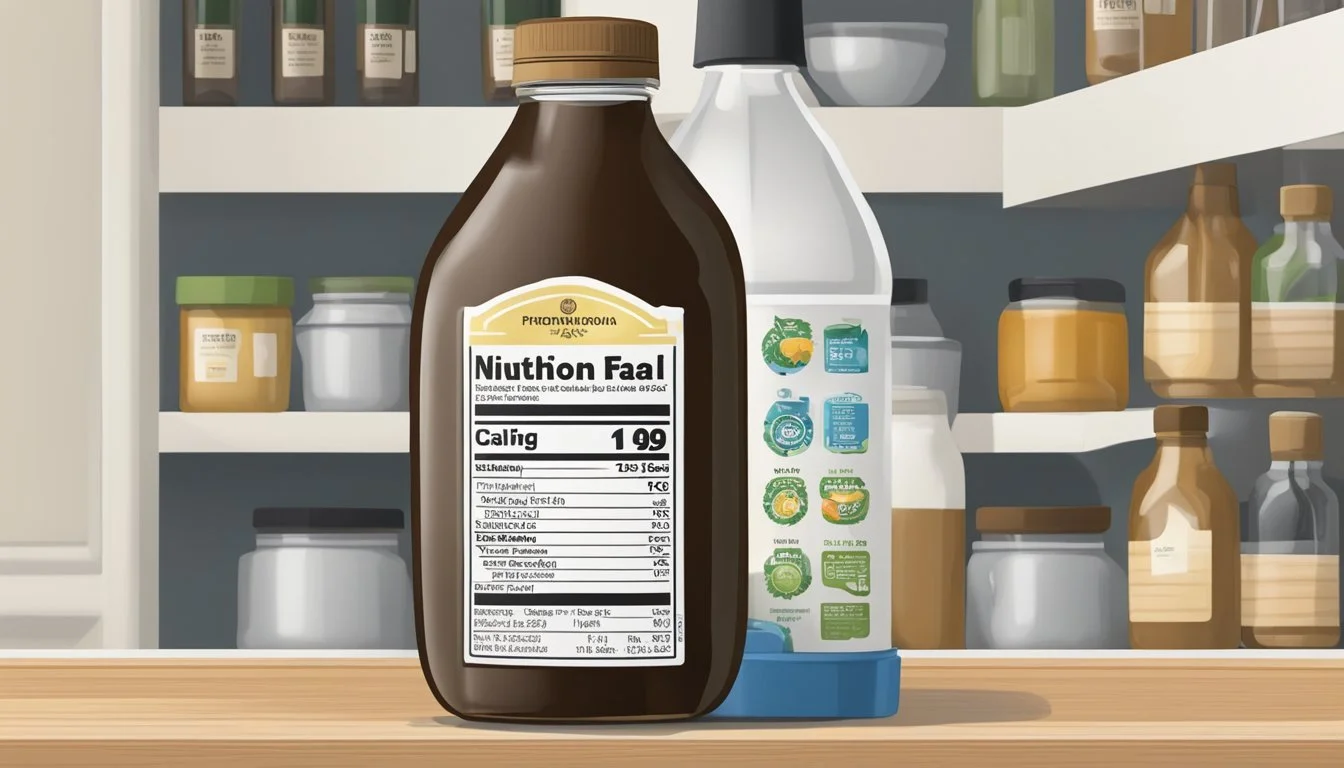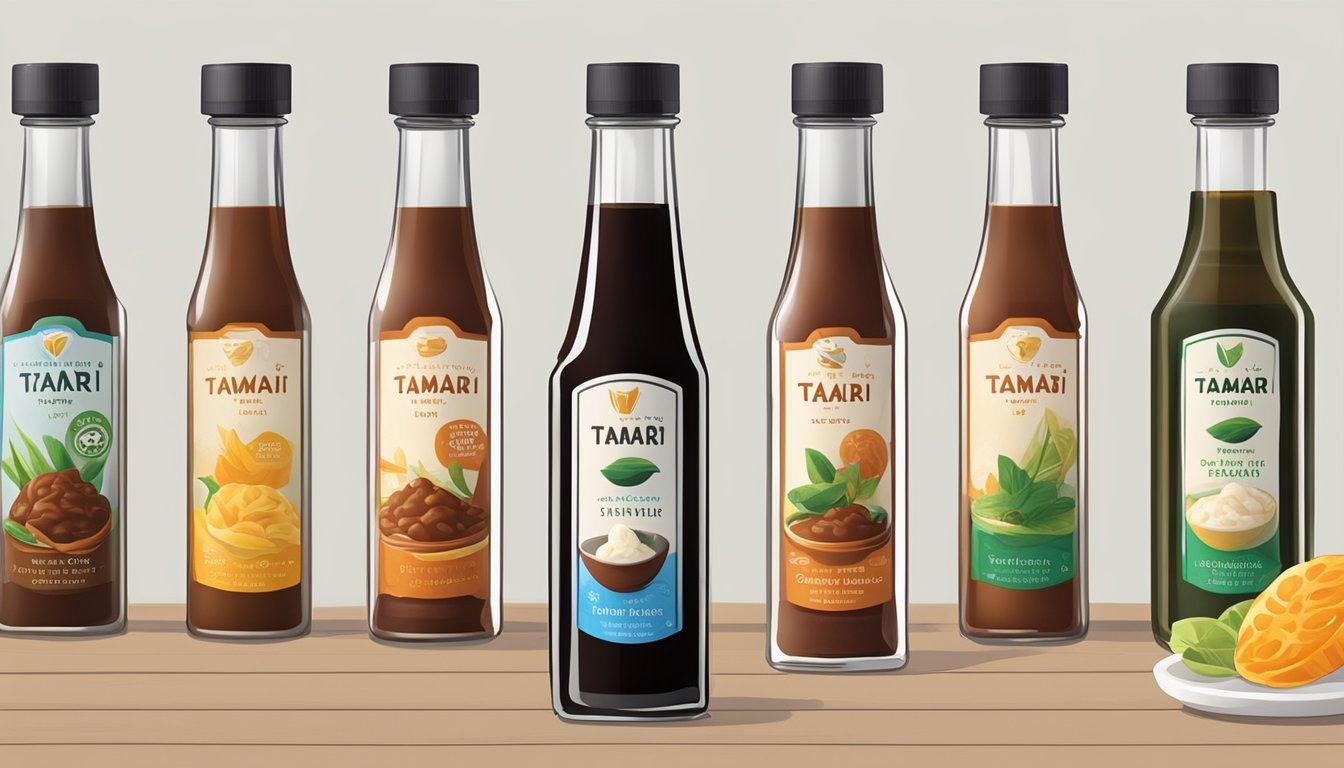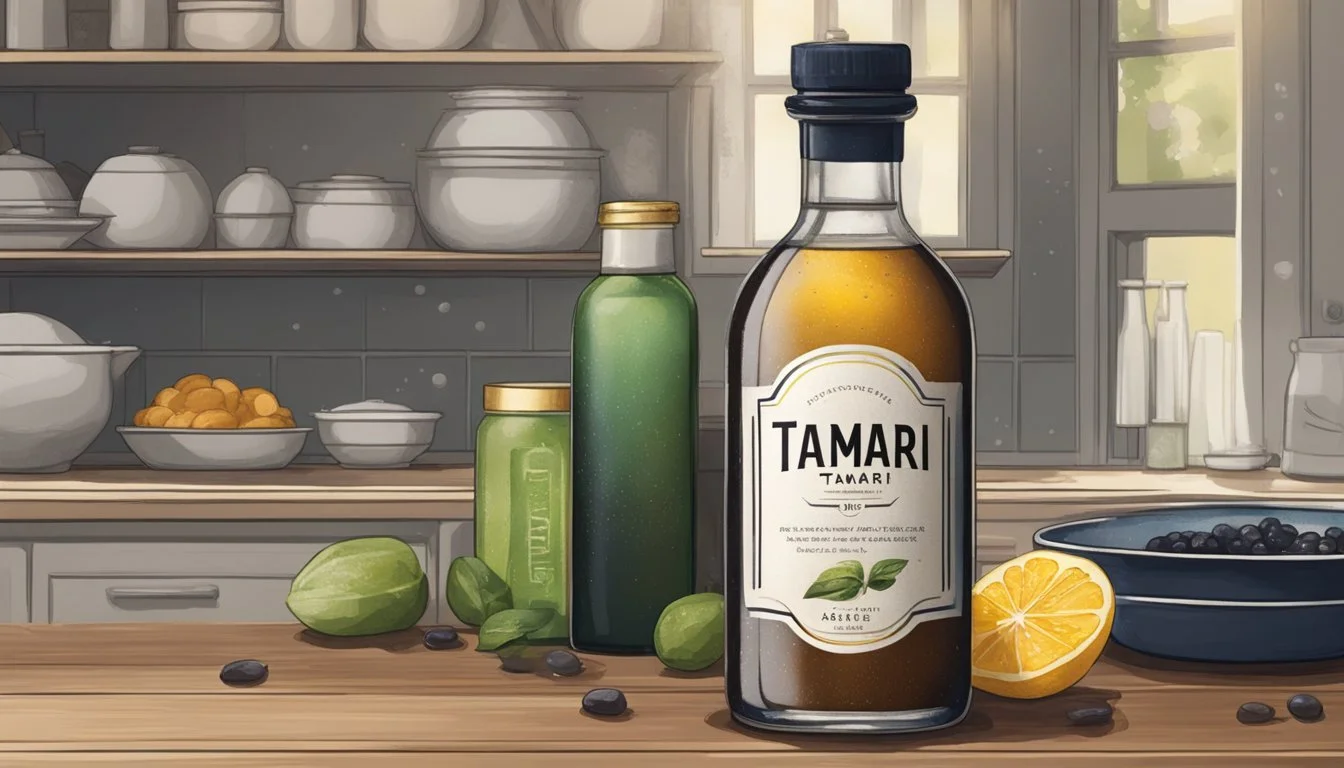How Long Does Tamari Last?
Shelf Life and Storage Tips
Tamari (how long does tamari last?), a Japanese soy sauce made primarily from fermented soybeans, is a staple condiment in many kitchens. It is often preferred by those seeking a wheat-free alternative to traditional soy sauces, as most tamari varieties do not contain wheat. The shelf life of tamari is an important consideration for maintaining the quality and flavor of this savory ingredient.
The longevity of tamari can vary depending on several factors including whether the bottle is opened or unopened, and how it is stored. An unopened bottle of tamari can last up to two years when stored in a cool, dry place away from direct sunlight. Once opened, tamari is best kept refrigerated to preserve its optimal taste and quality, typically maintaining its best characteristics for about six months to a year. However, it is still safe for consumption beyond this period, even though the peak flavor may diminish.
Tamari Basics
Tamari is a traditional Japanese soy sauce, characterized by its rich flavor and deep cultural roots. It stands apart from other soy sauces due to its unique composition and wheat-free option, making it a favorite for those on a gluten-free diet.
Origins and Cultural Significance
In Japan, tamari is integral to the culinary landscape, originating as a byproduct of miso paste production. Historically, it was developed in the Chubu region, specifically around the Nagoya area, and has been embraced for its pure taste and versatility. Tamari holds a place of respect in Japanese cuisine, often associated with the artful presentation and savory essence of dishes like sushi and various noodle and rice preparations.
Comparison to Other Soy Sauces
Tamari differs notably from regular soy sauce (shoyu) in both composition and flavor. While Chinese soy sauce—commonly represented by brands like Kikkoman—is thinner and usually contains wheat, tamari boasts a thicker consistency with a more balanced, less salty flavor profile. Regular soy sauce is a staple in a broader range of Asian dishes, whereas tamari specifically complements the subtleties of Japanese-style cuisine.
Ingredients and Gluten-Free Aspect
Principally made from fermented soybeans, tamari is a gluten-free soy sauce alternative since it typically omits wheat, a common ingredient in many soy sauce varieties. The fermentation process of tamari enhances its rich umami flavor. As such, tamari provides a wheat-free option for those looking to enjoy the complexity of soy sauce without gluten, spotlighting its significance in both allergen-friendly cooking and authentic Japanese dishes.
Nutritional Content
Tamari, derived from fermented soybeans, offers a robust nutritional profile with a distinctive umami flavor. This condiment is not only appreciated for its taste but also for its contribution to a balanced diet, particularly for those following vegan or vegetarian lifestyles.
Sodium Content
Tamari contains a significant amount of sodium, which is intrinsic to its function as a soy sauce variant. The exact sodium content can vary between brands, but it is generally high. Consumers should be aware of this when adding tamari to their meals, especially if they are monitoring their sodium intake.
Average sodium content per tablespoon: 940 mg
Percentage of Daily Value: 39%
Health Considerations
The health considerations of tamari are tied to its nutritional makeup, which includes proteins and a rich umami character that enhances flavor without the need for additional salt.
Proteins: Tamari provides a good source of proteins, making it a suitable additive for those on vegan or vegetarian diets.
Gluten-Free: Unlike traditional soy sauce, tamari is typically free from wheat, making it a gluten-free option for those with sensitivities or celiac disease.
When incorporating tamari into a diet, individuals should balance its high sodium content with their overall nutritional needs and health goals.
Tamari Storage and Shelf Life
Tamari, a type of soy sauce, is known for its rich flavor and preservation abilities due to its high salt content. The shelf life of tamari can greatly vary depending on whether the bottle is unopened or opened, and the storage conditions.
Unopened Tamari
An unopened bottle of tamari can typically last for a long duration without significant changes to its quality. Kept in a cool and dry place, ideally away from direct sunlight, the unopened tamari maintains its color, texture, and flavor well.
Opened Tamari
Once opened, tamari should be refrigerated to preserve its quality. It’s generally recommended to use the opened tamari within the first few months, although its salty properties allow it to remain edible for some time beyond this period.
Condition Shelf Life Table use 1 month Cooking use 3 months Refrigerator General Up to 2-3 years
Optimal Storage Conditions
To ensure the longest possible shelf life for both unopened and opened tamari, store the product in the refrigerator or a dark place at room temperature to protect it from temperature fluctuations and high heat. It should not be stored in environments where it may freeze or be exposed to prolonged periods of high heat.
Temperature: Keep consistently below room temperature, preferably in the fridge for opened bottles.
Light: Protect from direct light to maintain its quality.
Containers: Ensure that the bottle is tightly sealed after each use.
Signs of Spoilage and Freshness
When assessing tamari for spoilage and freshness, look for visible changes, smell for unusual odors, and be mindful of the expiration date as indicators of quality.
Changes in Color and Texture
Tamari should have a dark brown hue and a smooth, even consistency. Over time, the oxidation process can change its color to a lighter shade, indicating degradation. If the tamari appears thicker than usual or has developed lumps, this may suggest spoilage.
Foul Odor Indicators
Fresh tamari has a characteristic, yet subtle, aroma that should not be unpleasant. A foul odor is a clear sign that tamari has gone bad. If it smells sour or has an off-putting smell, it's best to discard it.
Film Yeast and Other Particles
The presence of a filmy layer or film yeast on the surface, mold, or floating particles within the bottle can all point to spoilage. Tamari should be clear of any such impurities to be considered fresh and safe for consumption.
Expiration Date Relevance
While tamari has a long shelf life, it is important to consider the best-before date. An expired soy sauce may not necessarily be unsafe, but the quality may not meet optimal freshness standards, and using it past this date could increase the risk of spoilage.
Culinary Applications
Tamari, a Japanese soy sauce known for its robust flavor, is a key ingredient in many culinary applications. Unlike typical soy sauce, it often boasts a richer umami flavor and a balanced profile that caters to a variety of dishes.
Flavor Profile Enhancement
Tamari's rich umami and slightly less salty qualities make it a choice condiment for enhancing the flavor profile of dishes. It contributes a deep, complex taste without overpowering other ingredients. Used judiciously, tamari can elevate the taste experience, adding both joy and balance to the palate.
Use in Recipes
In the kitchen, tamari serves as a versatile seasoning. Chefs incorporate it into marinades to tenderize proteins and impart savory notes. It's also a staple in stir-fries, contributing to the signature flavor associated with many Asian cuisines. Furthermore, tamari is often used in salad dressings, injecting a burst of umami into greens and vegetables.
Marinades: Mix with garlic, ginger, and honey for a flavorful meat marinade.
Stir-fries: Add during the cooking process for enhanced depth.
Salad Dressings: Whisk with olive oil and vinegar for a savory dressing option.
Sauce Pairings and Varieties
Tamari can be a standalone dipping sauce or part of a fusion of sauces and seasonings. In comparison to Chinese soy sauces, tamari is typically gluten-free, making it suitable for those with gluten sensitivities. Diverse types of tamari vary in concentration and flavor, with some aged longer for a more complex taste.
Dipping Sauces: Pure or mixed with sesame oil (how long does sesame oil last?) and scallions.
Sauce Mixing: Blended with chili paste or mustard for a spicy kick.
Role in Vegetarian and Vegan Dishes
As a plant-based condiment derived from soybeans and miso paste, tamari is widely appreciated in vegetarian and vegan diets. It offers a flavor-enhancing alternative to animal products, infusing dishes with a hearty umami essence. It's not uncommon to find tamari in vegan soups or as a base for vegetarian-friendly sauces.
Vegan Soups: Adds depth to broths and vegan stews.
Vegetarian Sauces: Base ingredient for gravies and creamy sauces.
Tamari Preservation Techniques
When storing tamari, understanding how to preserve its quality effectively is essential. Proper techniques are pivotal to maintaining its flavor and extending its shelf life.
Natural Preservatives
Tamari contains natural preservatives that arise from the fermentation process. Salt is a key ingredient, acting as a preservative to inhibit the growth of unwanted bacteria. Additionally, byproducts of the fermentation, such as certain organic acids, also contribute to the preservation of tamari. These components help tamari to retain freshness for longer compared to other sauces without the need for artificial preservatives.
Pasteurization and Stabilization
The pasteurization process is a standard technique used to preserve tamari by rapidly heating and then quickly cooling it. This method eliminates potential pathogens and extends the shelf life. After pasteurization, stabilization agents could be introduced to ensure the flavor and quality remain consistent over time. These steps are crucial for tamari that needs to be transported over long distances or stored for extended periods.
Fermentation and Aging
The fermentation of tamari is a precise and carefully monitored process involving both yeasts and bacteria. It is during this time that the robust flavors and aromatic compounds develop. Aging can differ in duration; a longer fermentation process will not only contribute to a deeper flavor profile but also to the tamari's stability. Tamari's high protein content, derived from soybeans, provides an optimal environment for the fermenting agents, resulting in a product that naturally withstands spoilage for months, especially when stored correctly in a cool, dark place, like a refrigerator, once opened.
Frequently Asked Questions
The following subsections address common queries regarding the differences between tamari and regular soy sauce, particularly focusing on their implications for dietary restrictions.
Tamari vs. Regular Soy Sauce Differences
Tamari is a type of soy sauce originating from Japan, traditionally made as a byproduct of miso, using primarily fermented soybeans. Regular soy sauce, often associated with Chinese cuisine, typically includes both soybeans and wheat in its fermentation process.
Key distinctions include:
Ingredients: Tamari often omits wheat, resulting in a gluten-free product, whereas regular soy sauce usually contains wheat.
Flavor: Tamari has a richer, less salty taste compared to regular soy sauces, attributable to its higher concentration of soybeans.
These differences not only contribute to the unique taste and texture of tamari but also make it a suitable seasoning option for individuals following a gluten-free diet.
Implications for Dietary Restrictions
Tamari's composition without wheat makes it a viable condiment for various dietary needs. It's particularly favored because it's:
Gluten-Free: Essential for people with celiac disease or gluten sensitivity.
Vegan/Vegetarian: As tamari is derived from soybeans, it's suitable for those avoiding animal products.
When seeking a gluten-free soy sauce, tamari is a preferred choice because even gluten-free labeled Chinese soy sauces may sometimes be processed in facilities that handle wheat, leading to potential cross-contamination. Always check labels for certification if gluten intake is a concern.
Conclusion
Tamari, a by-product of miso fermentation, boasts a longer shelf life than many might expect. An unopened bottle of tamari, when stored properly in a cool, dark place, can maintain its quality for up to two to three years. Once opened, however, its longevity hinges on storage conditions. To best preserve its flavor and quality, it should be stored in the refrigerator.
In the refrigerator:
Opened tamari: up to three years
Optimal flavor: first six months
At room temperature:
Opened tamari: less advisable (quality diminishes faster)
Tamari's flavor profile, less salty and with a slightly richer taste compared to traditional soy sauce, may change subtly over time but it generally remains safe to consume past the optimal flavor time frame, provided it's been stored correctly and no signs of spoilage are present. If mold or an off odor is detected, the tamari should be discarded.
In summary, tamari users should adhere to proper storage practices to ensure its longevity. Their assessment of the condiment's quality over time will guide when to best utilize it in their culinary creations.

